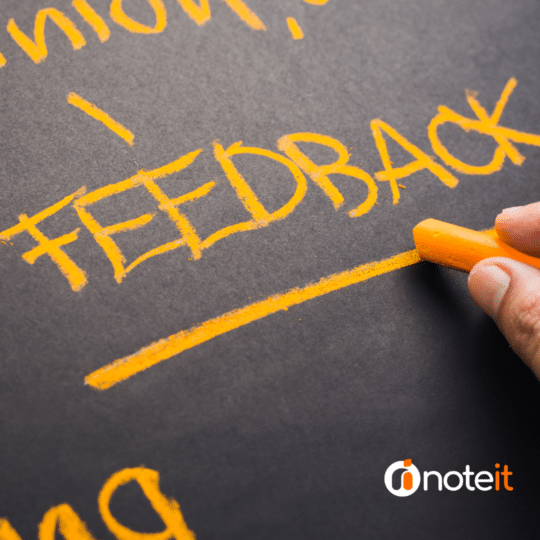We often imagine feedback as a tool to improve performance and inspire personal growth. But delivered in the wrong way, feedback can have harmful outcomes.
Neuroscience research, for example, has shown that providing negative performance appraisal feedback causes actual physical pain to both the employee and the manager.
The reason is simple, even though negative feedback is supposed to highlight areas for improvement, it’s perceived as a psychological threat because it damages the positive view we take of ourselves – and because of this we are not open to receiving guidance; instead, fear impairs our ability to thoughtfully consider the feedback for improvement.
Paring constructive criticism with positive feedback
You might think pairing positive and negative feedback would balance the outcome, but research has shown that it takes five pieces of positive recognition to counter one piece of negative feedback. And that means dishing out a lot of compliments when a tougher performance review conversation may be required.
Ok, that was the good news, here comes the bad news
What’s more, when managers form a ritual of preceding negative feedback with positive feedback, they create a behavioural pattern where employees perceive that critical feedback will always follow positive feedback: “Ok, that was the good news, here comes the bad news.”
Is feedback actually an effective tool for improvement?
At this point you might be wondering that very question? The answer is, of course, yes. But it’s not whether the feedback is positive or negative that makes it effective, it’s the method in which it is delivered.
To really make an impact, it's about evolving the way you're giving the critical feedback; rather than feedback being merely corrective or punitive, it should be framed as a dialogue that inspires growth by focusing on ways to meet future goals.
This is the difference between saying, “That was the wrong thing to do” and “How do you think you could do this differently next time?”
Adding value to the feedback you give
Research also shows that adding accompanying validation affirming the inherent goodness and value a person has to a business or organisation can be beneficial when giving a critique because people need to know they are valued, and that their contributions are generally positive.
So, “You shouldn’t have done that” might become “I value all the extra overtime you put in to meet the deadline. But how do you think you could do this more efficiently next time?”
It’s important to remember that critical and negative performance review conversations may still need to be had, but these escalations shouldn’t be the first port of call when giving feedback. If the process of improving performance through conversational and affirmative feedback isn’t achieving results, a more serious dialogue can be established.
Adapting feedback in times of change
Transforming your methods for feedback can be especially significant in times of change, like when dealing with changing workforce structures – remote workers being one of the most challenging.
With limited interactions and a potential deficiency in context, remote feedback can lack some empathy. Research shows that employees respond better to empathetic and approachable management, so being conscious of your body language and tone of voice are essential, especially over a video call. Taking the time to smile and make eye contact can significantly improve the way remote workers receive and act on your feedback.
It can be easy to disconnect when not working in the same workspace, scheduling regular catchups and increasing communications can ensure that all team members feel a shared sense of responsibility and purpose. What’s more, booking in regular one-to-one catchups provides the perfect opportunity to give validating and effective performance review conversations.
Rethink your feedback for success
By re-evaluating the way you provide feedback, you’ll create an atmosphere that inspires personal growth and encourages the understanding of issues, even if your team is working remotely. Employing this method can lead to a workforce that is motivated by achievement and value, rather than by consequence.



